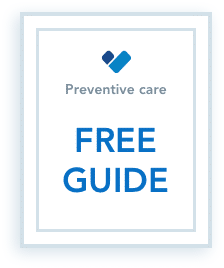How can I confirm that my provider is in-network?
You’ve enrolled in the best health insurance plan for your needs, and now it’s time to get the medical care you’ve paid for. But before you make an appointment with a doctor, make sure to confirm that your provider is in your coverage network. If you don’t, it could become a financial nightmare if you go to the wrong doctor and your health insurance refuses to pay your medical bills. Here’s why it’s important to make sure your provider is in-network, and how you can confirm it.
What is a coverage network?
A coverage network, or provider network, refers to the group of healthcare providers and facilities whose services are covered under a health insurance plan. Healthcare providers and facilities that are “in-network” have agreed to provide care for the network’s members at set price points negotiated with the insurance company. Typically, your healthcare costs will be lower if you stick to in-network providers. Healthcare providers and facilities that have not agreed to the terms and prices of a certain network are considered “out-of-network”.
If you have a managed care health insurance plan like most insured Americans, then you have a coverage network. Some health insurance plans only cover services from healthcare providers that are in-network, while others will provide varying levels of coverage for out-of-network providers as well.
How do I find a doctor that accepts my insurance?
You can typically find a doctor or hospital that accepts your insurance by searching your insurance company’s network database.
Many healthcare providers will also have notices in their office or on their website that list the type of insurance they accept. But be aware: it’s important that your healthcare provider not only accepts your insurance but is also in your health insurance plan’s network. Just accepting your insurance is not enough.
When a healthcare provider accepts an insurance plan, it simply means that they’ll file a claim with your insurance company for the medical services provided. Whatever your insurance company doesn’t pay for will be billed to you, and this could be as much as the entire bill, depending on whether your plan covers out-of-network visits. If a healthcare provider is in-network, however, they’ll file a claim with the insurance company and then zero out any leftover balance.
How can I confirm my provider is in-network?
Coverage networks can change daily and insurance companies’ provider lookup tools aren’t always up-to-date. In addition, insurance companies offer many different health insurance plans and each plan can have a different network. Each doctor in a particular clinic or medical office can also belong to different insurance plan networks. As such, it’s important to always confirm whether a particular provider is still in-network for your specific plan.
The best approach is to ask your healthcare provider for their tax identification number. Then contact your insurance company and use that tax identification number to check if your doctor or hospital is in-network for your specific plan. Make sure your confirmation of coverage comes in writing and from your health insurance company instead of your doctor, as the insurance company has the final say on what’s covered. Keep this written confirmation as it will help you in the appeals process should your insurance company later decide to categorize your medical treatment as out-of-network.
What if my preferred doctor is not in my coverage network?
If you have a preferred doctor but they’re not in your coverage network, you can choose to go out-of-network and pay out-of-pocket for your medical care. This can be a very expensive option though, especially if your health insurance plan only covers in-network medical care. If you choose this option, make sure to understand your out-of-pocket costs first and discuss potential cash discounts with your chosen healthcare provider. If this is not financially feasible, you might be better off picking a new healthcare provider. Make sure your potential new doctor is in-network with your plan and contact them to confirm they’re accepting new patients.
When the next Open Enrollment Period comes around, you can also make sure to pick a new plan that has your preferred doctor in its coverage network. When comparing new health insurance plans, you can enter your preferred healthcare provider’s name and see if they’re in-network with the plans you’re considering.














Leave a Comment